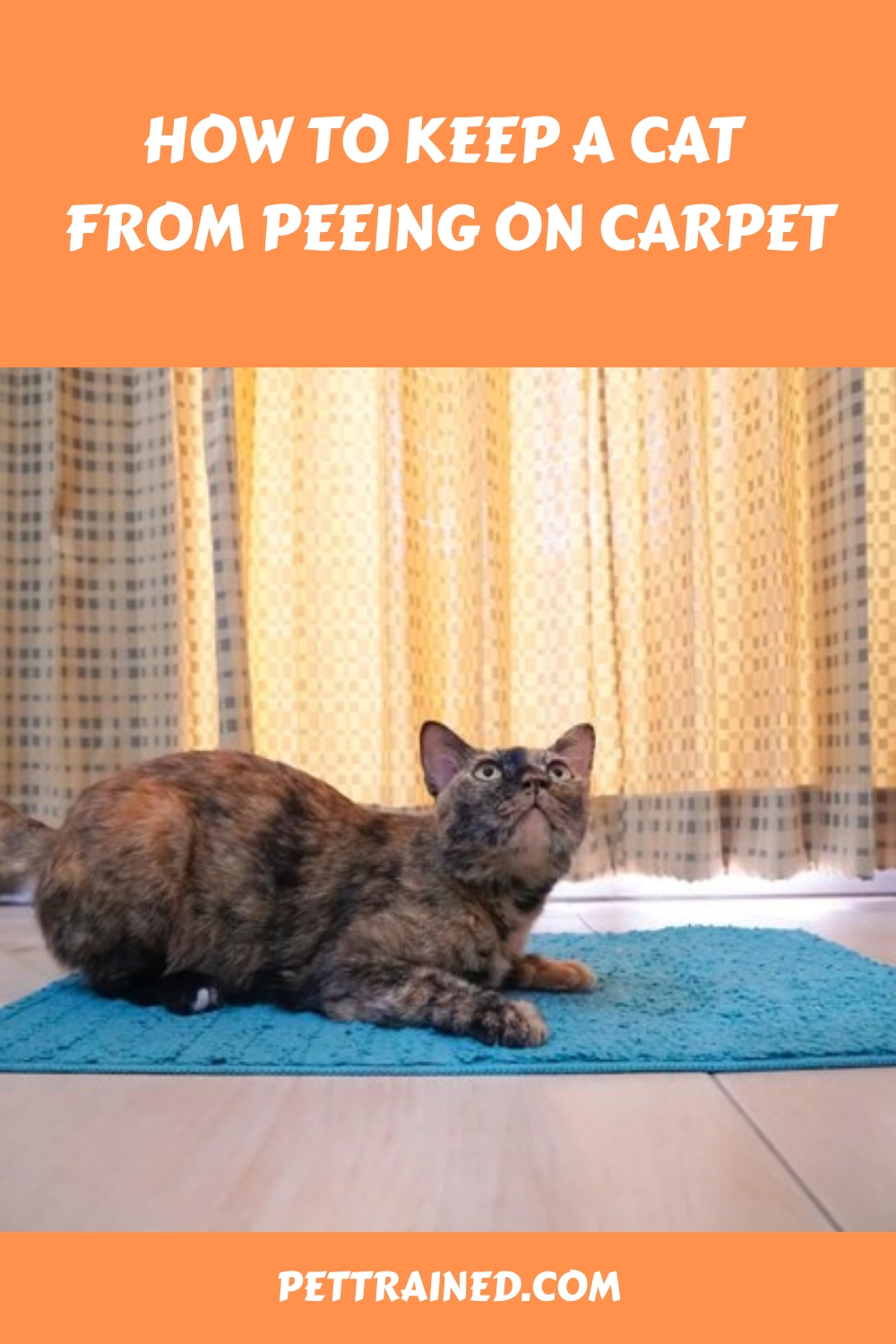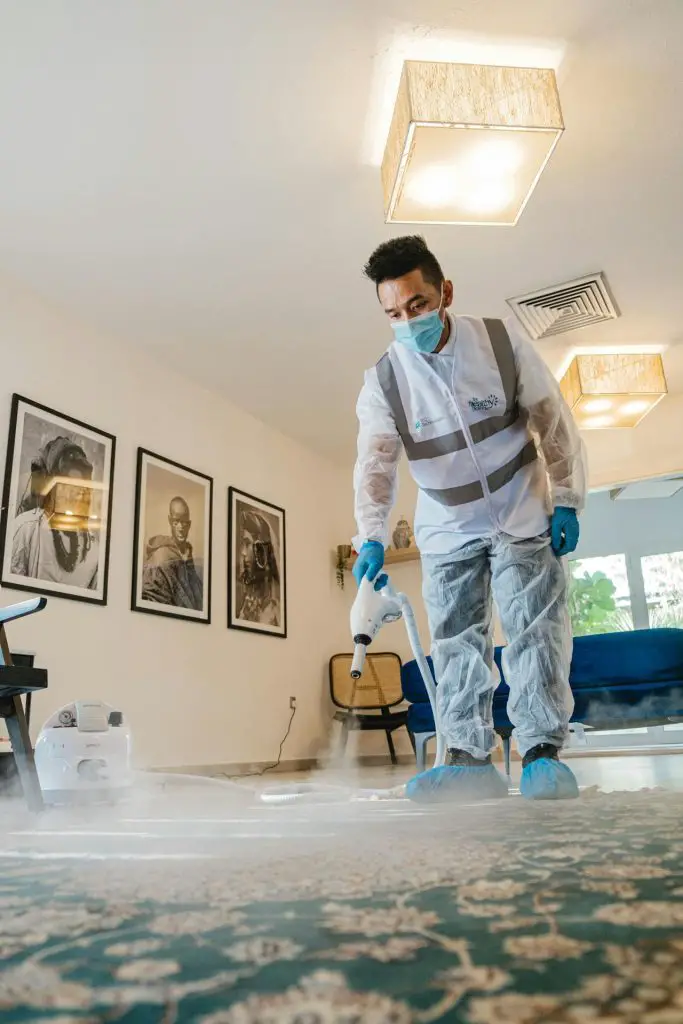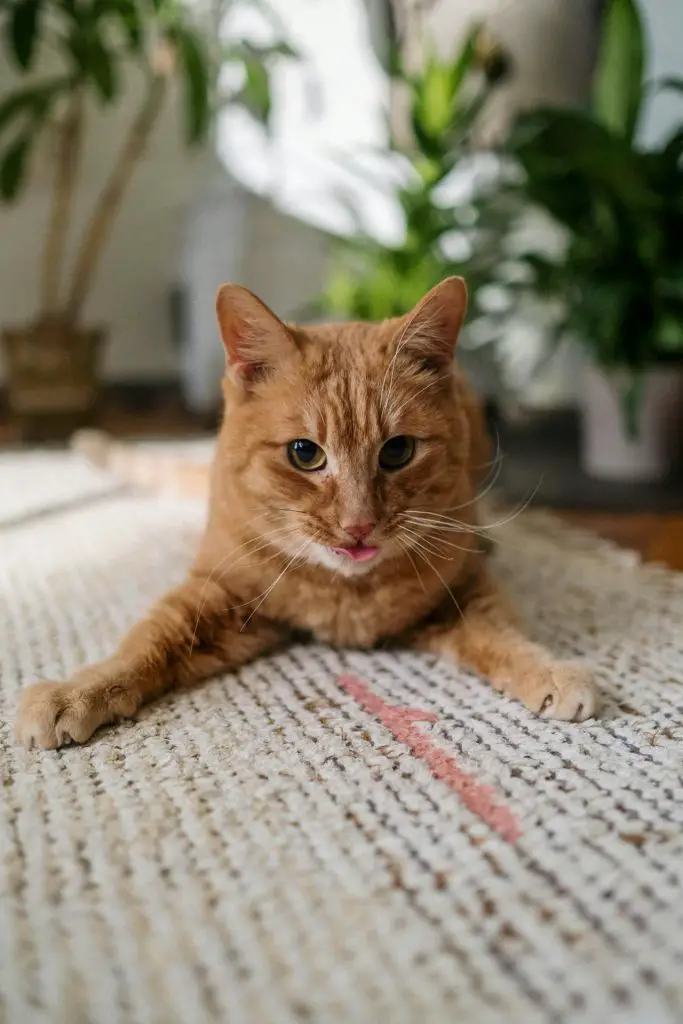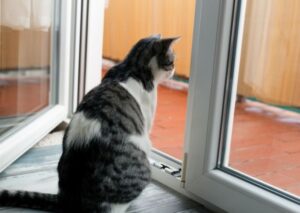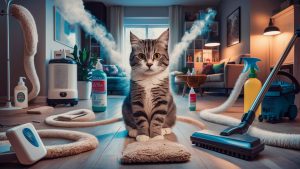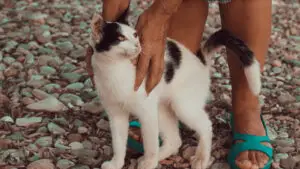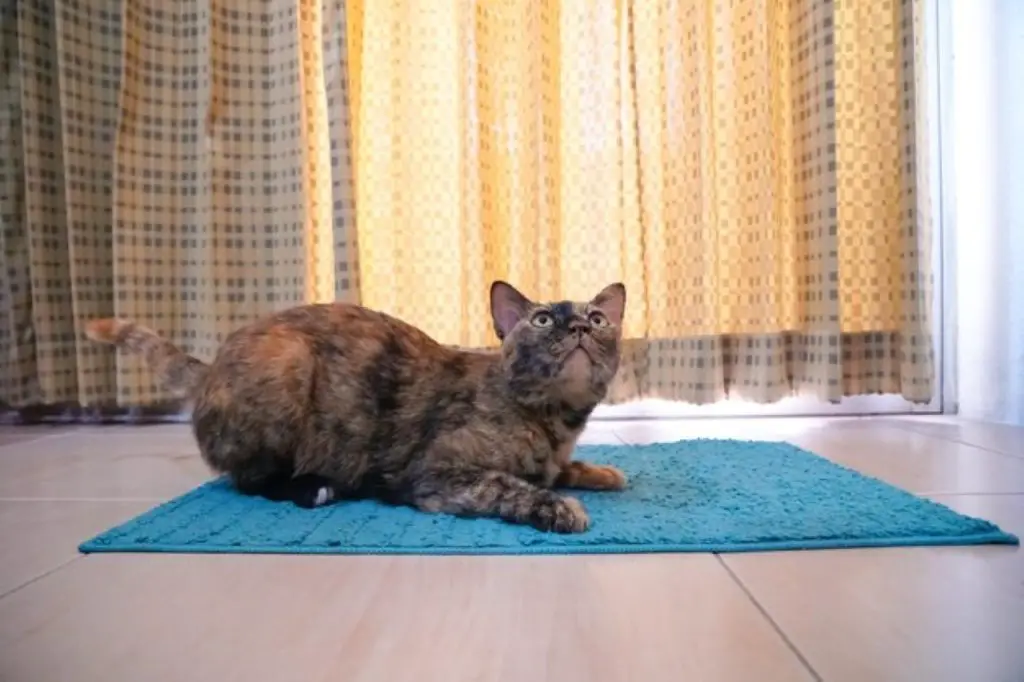
To prevent your cat from urinating on the carpet, you need to address underlying medical issues, such as urinary tract infections or kidney stones, and environmental factors like inadequate litter box maintenance or territorial marking. Clean accidents properly using enzymatic cleaners to break down uric acid crystals, and provide enough litter boxes – at least one per cat plus one additional. Reducing stress and anxiety, spaying or neutering, and using positive reinforcement training can also help. By tackling these key areas, you can considerably reduce the likelihood of carpet accidents and develop a plan to overcome this common issue.
Table of Contents
Identify Medical Issues
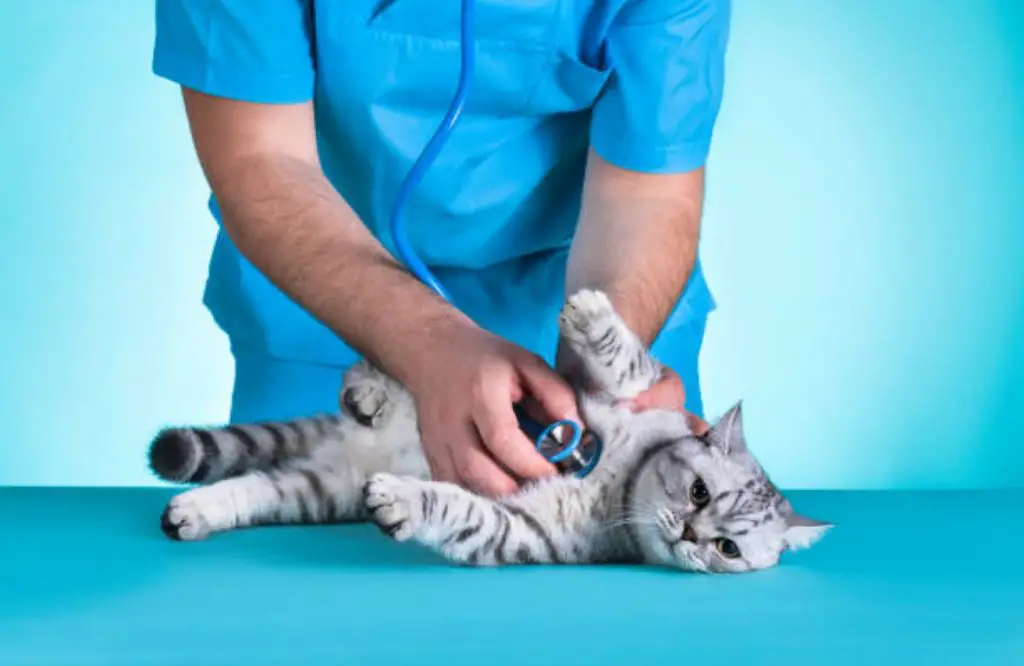
If your cat is urinating on the carpet, the first step is to rule out any underlying medical issues that could be causing this behavior.
You’ll want to take your cat to the vet for a thorough examination, as urinary tract problems can be a common cause of accidents.
Your vet will perform a physical examination, take a complete medical history, and may run some diagnostic tests to determine if there’s an underlying issue that needs to be addressed.
Some common medical issues that can cause cats to urinate outside of the litter box include urinary tract infections, kidney stones, and diabetes.
This post contains affiliate links. However all the information provided on this site are my own honest opinions. See more in Disclaimer.
Your vet may also ask about any behavioral changes you’ve observed in your cat, as these can be indicative of a medical issue.
Once any underlying medical issues have been ruled out, you can start to focus on addressing any behavioral or environmental factors that may be contributing to the problem.
Clean Accidents Properly
Now that you’ve addressed any underlying medical issues, it’s essential to clean accidents properly to prevent your cat from returning to the same spot.
To do this effectively, you’ll need to focus on three key areas: neutralizing urine odors, removing stains effectively, and preventing future accidents.
Neutralize Urine Odors
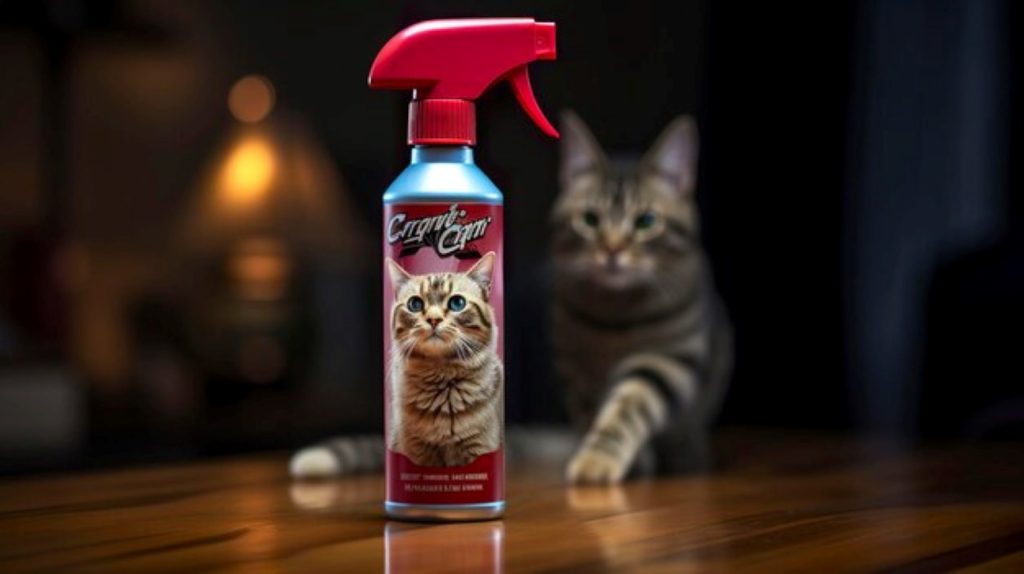
To eliminate lingering scents that might attract your cat to the same spot again, you must thoroughly neutralize urine odors from accidents on the carpet.
This involves using the right cleaning products, specifically designed to break down and eliminate uric acid crystals – the source of the smell.
You can use urine neutralizers or odor absorbers, which contain enzymes that break down the proteins in cat urine, rendering the smell undetectable to your cat’s sensitive nose.
When using these products, always follow the manufacturer’s instructions and make sure to rinse the area thoroughly with cold water to remove any remaining bacteria or uric acid crystals.
Don’t use regular household cleaners or bleach, as these can actually amplify the smell or push it deeper into the carpet.
By neutralizing the urine odor, you reduce the likelihood of your cat returning to the same spot to pee again. This is an essential step in breaking the cycle of accidents and retraining your cat to use the litter box.
Remove Stains Effectively
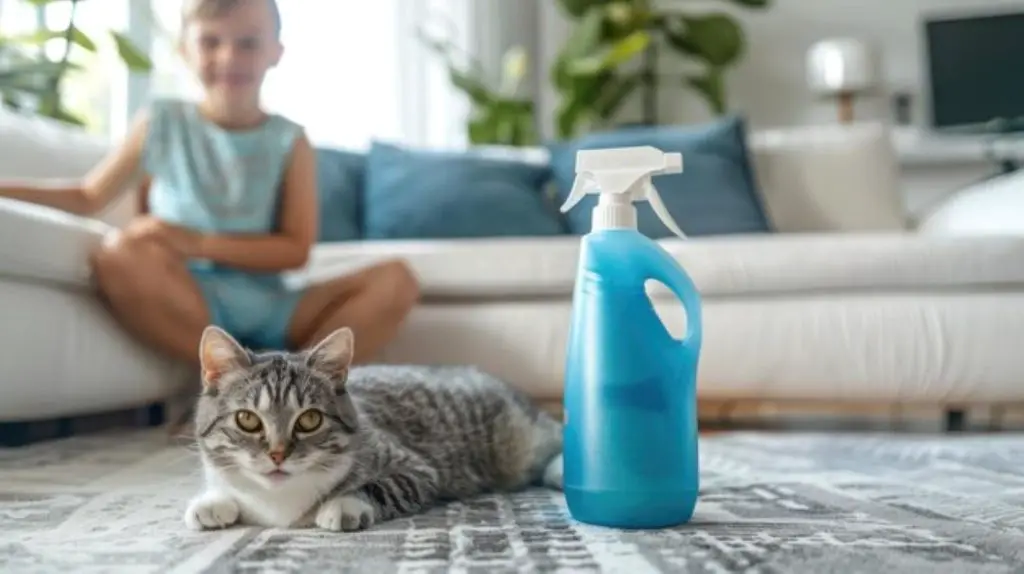
Removing stains effectively is a crucial step in cleaning accidents properly, as lingering visual reminders of past mishaps can actually encourage your cat to pee in the same spot again.
To achieve this, you’ll need to focus on stain removal and carpet cleaning techniques. Here are three key steps to follow:
- Act quickly: The sooner you treat the stain, the better chance you have of removing it completely. Urine contains uric acid, which can permanently damage carpet fibers if left untreated.
- Blot, don’t rub: Gently blot the stain with a clean, damp cloth or paper towel. Avoid rubbing, as this can push the stain deeper into the carpet.
- Use a cleaning solution: Apply a carpet cleaning solution specifically designed to remove pet stains. Follow the product’s instructions and test a small, inconspicuous area of the carpet first to verify the solution doesn’t damage the fibers.
Prevent Future Accidents
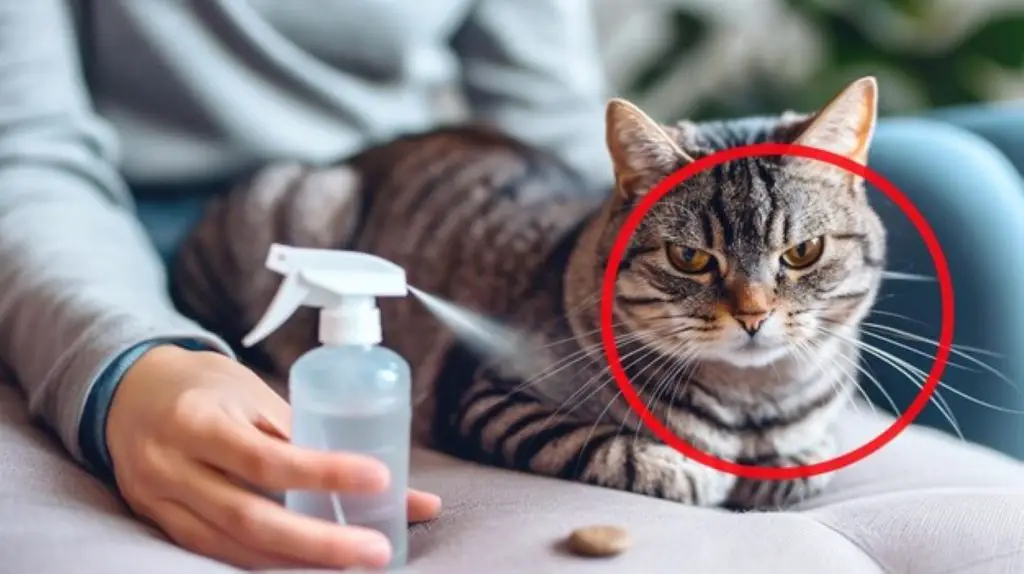
Effectively cleaning accidents involves more than just removing stains – it also requires neutralizing lingering scents that can attract your cat to the same spot again.
You’ll want to use a cleaner that’s specifically designed to eliminate organic odors, such as those containing enzymes or white vinegar.
When cleaning, make sure to soak the affected area thoroughly, then rinse it with cold water to remove any remaining cleaner or debris.
Understanding cat behavior is essential in preventing future accidents. Cats often pee outside the litter box due to stress, boredom, or medical issues.
Providing environmental enrichment, such as scratching posts, climbing structures, or puzzle toys, can help reduce stress and keep your cat stimulated.
Additionally, you can try rearranging the layout of your home or adding more litter boxes to reduce competition for resources.
By addressing the underlying causes of your cat’s behavior and properly cleaning accidents, you can help prevent future incidents and keep your carpet stain-free.
Regular cleaning and maintenance will also help you identify any potential issues early on, allowing you to take proactive steps to prevent further accidents.
Provide Enough Litter Boxes
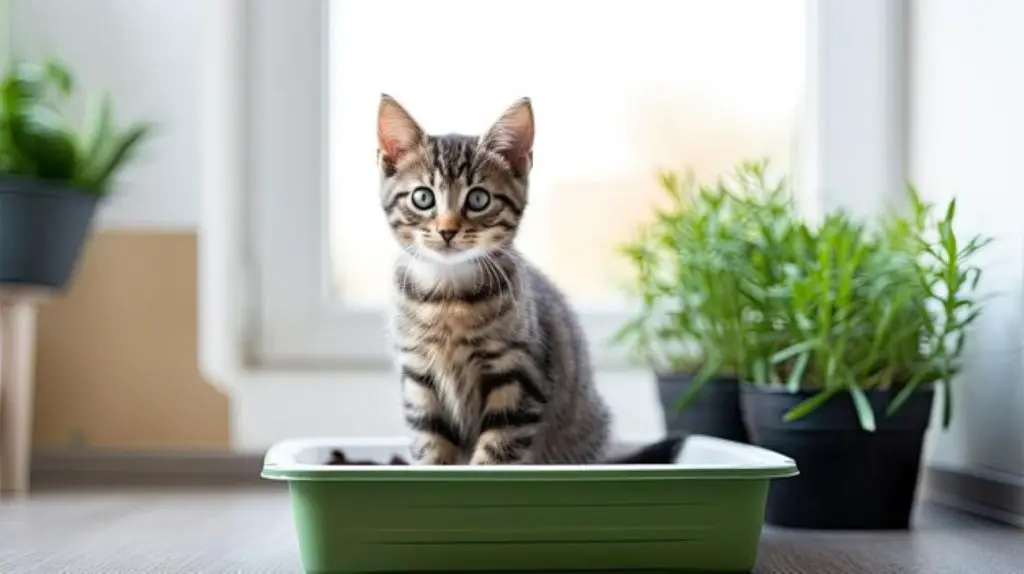
You should maintain a minimum of one litter box per cat, plus one additional litter box, to guarantee each cat has sufficient access and reduce the likelihood of accidents outside of the litter box.
Providing enough litter boxes is vital, as it prevents overcrowding and gives each cat its own space. When choosing litter boxes, consider the size, type, and number of cats that will be using them.
Here are three key considerations to keep in mind:
- Size matters: Choose a litter box that’s at least 1.5 times the length of your cat. This will give them enough space to turn around comfortably.
- Box placement is essential: Place litter boxes in quiet, low-traffic areas where your cat feels safe and won’t be disturbed. Avoid placing them near their food and water bowls.
- Litter box types: Consider the type of litter box that suits your cat’s preferences, such as hooded or unhooded, clumping litter or natural litter. Offer a variety to cater to their individual needs.
Reduce Stress and Anxiety

Stress and anxiety can play a significant role in a cat’s decision to pee outside of the litter box, making it vital to identify and mitigate any potential sources of feline stress in the home.
You need to observe your cat’s behavior closely to pinpoint the specific causes of their anxiety.
Common behavioral triggers include changes in your work schedule, the addition of new pets or family members, and even the rearrangement of furniture.
To alleviate these stressors, try to maintain a consistent daily routine and provide a stable environment. Environmental enrichment is also important in reducing your cat’s stress levels.
You can achieve this by providing toys, scratching posts, and climbing structures that challenge your cat physically and mentally. Additionally, create quiet spaces where your cat can retreat when feeling overwhelmed.
Neuter or Spay Your Cat
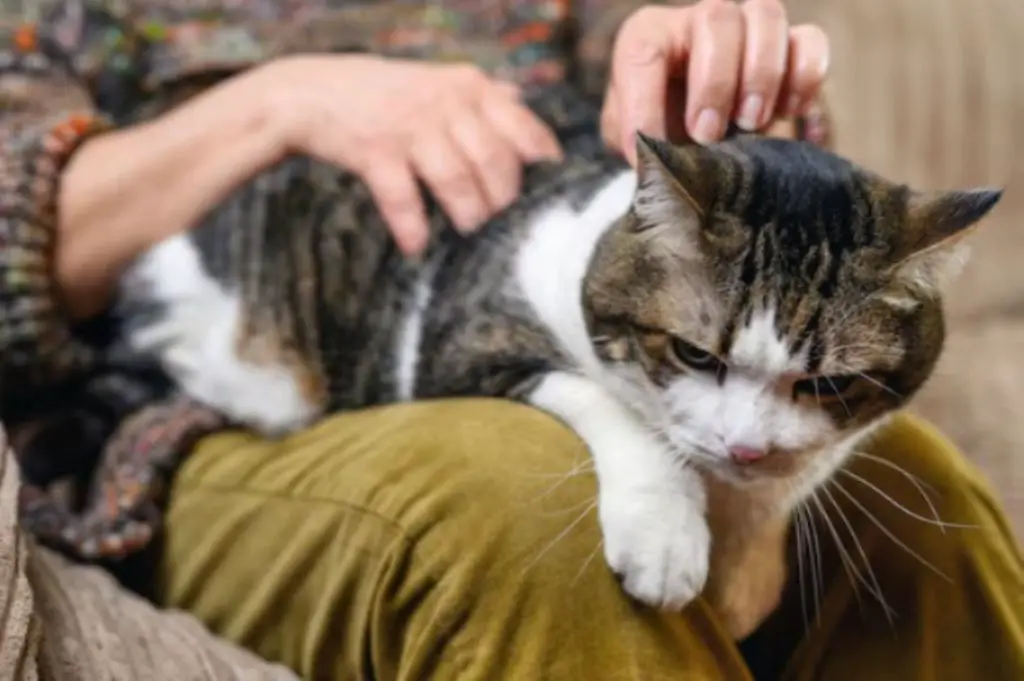
Failure to spay or neuter a cat can lead to undesirable behaviors, including marking territory by urinating on carpets and other surfaces.
Trending in Cats:
If you don’t want your cat to pee on your carpet, it’s important to think about spaying or neutering. The benefits of spaying or neutering are numerous, and it’s a vital step in preventing unwanted behaviors.
When a male cat isn’t neutered, he’ll exhibit male cat behavior such as spraying urine to mark his territory. This is a natural behavior, but it’s not acceptable in a domestic setting.
By neutering your cat, you’ll reduce the likelihood of this behavior occurring.
Here are three key benefits of spaying or neutering your cat:
- Reduces marking territory: Spaying or neutering reduces the instinct to mark territory by urinating.
- Decreases roaming: Spayed or neutered cats are less likely to roam in search of a mate, which reduces the risk of accidents or contracting diseases.
- Prevents unwanted breeding: Spaying or neutering prevents unwanted breeding, which helps control the population and reduces the risk of certain health issues.
Use Positive Reinforcement Training
Implementing positive reinforcement training is an essential step in teaching your cat to associate the litter box with desirable behavior, thereby reducing the likelihood of accidents on the carpet.
By using clicker training, you can create a positive connection between the litter box and your cat’s actions.
Clicker training involves making a distinct sound with a clicker the moment your cat performs the desired action, such as stepping into the litter box or eliminating in it.
Immediately after clicking, provide treat rewards to reinforce the behavior.
Consistency is key in positive reinforcement training. Set aside time each day to practice clicker training with your cat, focusing on the litter box area.
Make sure to use the same clicker sound and treat rewards each time, so your cat can quickly learn the association.
As your cat becomes more comfortable with the litter box, you can gradually phase out the treat rewards, but continue to use the clicker sound to reinforce good behavior.
Eliminate Attracting Smells
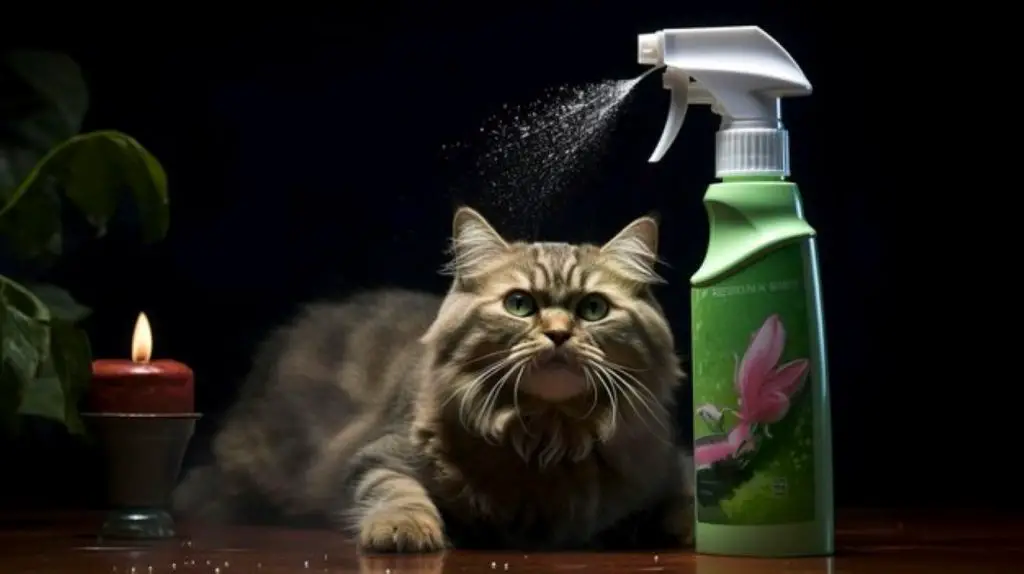
Now that you’ve encouraged good litter box habits through positive reinforcement training, it’s time to tackle another vital aspect of preventing carpet accidents: eliminating attracting smells.
You’ll want to focus on removing strong odors quickly and effectively, as cats are naturally drawn to areas that smell like urine or other pungent substances.
Remove Strong Odors Fast
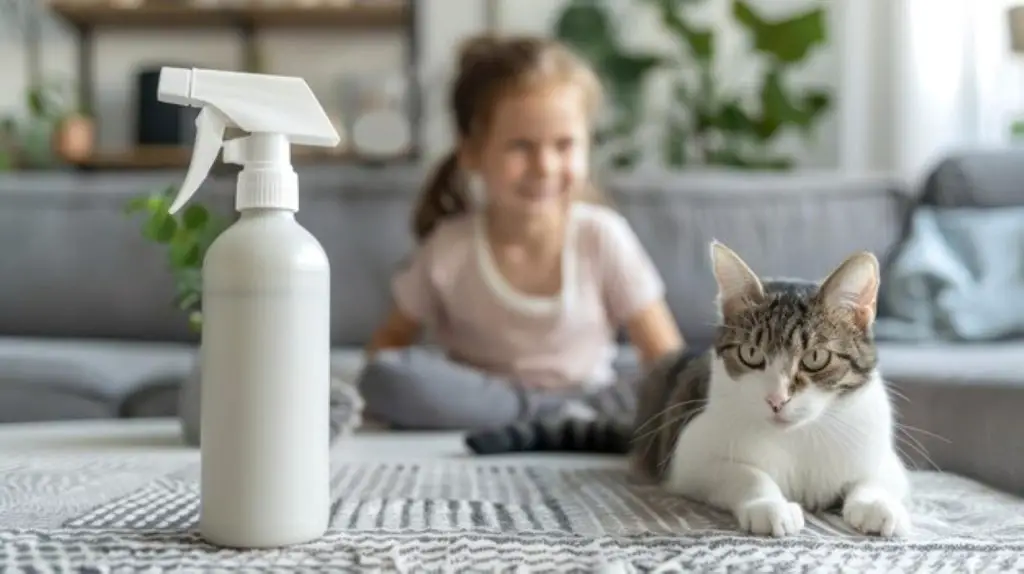
To effectively remove strong odors that attract your cat to pee on the same spot again, you must neutralize the alkaloid salts in the urine. These salts are the culprit behind the strong, pungent smell that lingers long after the accident.
You’ll need strong enzymatic cleaners that can break down the uric acid crystals and effective odor neutralizers to eliminate the smell.
Here are three steps to remove strong odors fast:
- Act quickly: The sooner you clean the area, the less time the uric acid crystals have to penetrate the carpet fibers, making them harder to remove.
- Use the right cleaner: Choose a strong enzymatic cleaner specifically designed to break down uric acid crystals and eliminate organic stains and odors.
- Neutralize and rinse: Apply an effective odor neutralizer to the affected area, let it sit for a few minutes, and then rinse with cold water to remove any remaining residue.
Neutralize Urine Smells
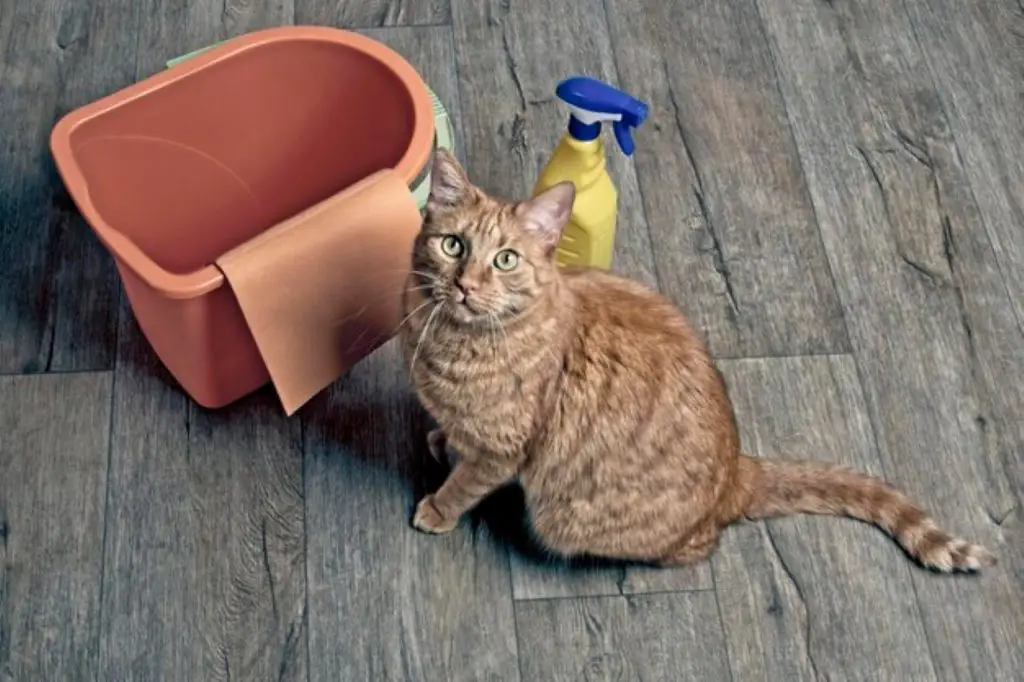
You’ll need to adopt a multi-step approach to neutralize urine smells that attract your cat to the same spots repeatedly.
First, identify and treat all areas where your cat has urinated using a combination of cleaning products and urine neutralizers.
These products contain enzymes that break down the uric acid crystals responsible for the lingering smell. Apply the product according to the manufacturer’s instructions and let it sit for the recommended amount of time before rinsing.
Next, use odor absorbers to eliminate any remaining smells. You can place these products near the affected areas or in the litter box to absorb any lingering odors. Activated charcoal and baking soda are effective natural odor absorbers.
Regularly cleaning the litter box and replacing the litter completely every 7-10 days will also help reduce urine smells.
By adopting this multi-step approach, you’ll be able to neutralize urine smells and reduce the likelihood of your cat being attracted to the same spots repeatedly.
Remember to always follow the manufacturer’s instructions when using cleaning products and urine neutralizers.
Block Access to Carpet
Blocking access to carpet is an essential step in preventing unwanted accidents, and most effectively achieved by restricting your cat’s entry to carpeted rooms or areas until the underlying issues are resolved.
By limiting your cat’s access to carpeted areas, you’ll reduce the likelihood of accidents and make cleanup easier.
To block access to carpet, consider the following strategies:
- Room restrictions: Close doors to carpeted rooms or areas, or use baby gates to restrict access.
- Furniture barriers: Rearrange furniture to block access to carpeted areas or place double-sided tape or aluminum foil on surfaces to deter cats.
- Supervise and redirect: Keep a close eye on your cat and redirect them to litter boxes or acceptable surfaces when you see them attempting to access carpeted areas.
Frequent Questions
Like Hercules battling the Hydra, you’re fighting a multi-headed problem; changing carpet types may not be the solution. Cats are drawn to certain carpet textures and scent preferences, so it’s not a guarantee against accidents, but it’s worth exploring.
You’ll want to exercise caution when using essential oils around cats, as their safety and efficacy depend on individual feline scent preferences and sensitivities; some oils may repel, while others may attract or cause harm.
You’ll be surprised to learn that it takes around 3-6 months to train a cat to stop peeing on carpet using behavior modification techniques, such as providing an adequate litter box and rewarding desired habits.
You’re likely worrying that your cat will pee on the carpet if the litter box is cleaned too frequently. Don’t worry, proper litter box maintenance won’t drive your cat to undesirable behavior; in fact, cats prefer cleanliness.
You can try a belly band on a cat that pees on carpet, but its effectiveness depends on the underlying cat behavior causing the issue; belly bands don’t address the root cause, only the symptom.
